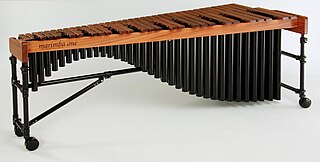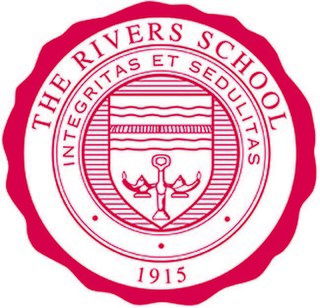Related Research Articles

The marimba is a musical instrument in the percussion family that consists of wooden bars that are struck by mallets. Below each bar is a resonator pipe that amplifies particular harmonics of its sound. Compared to the xylophone, the marimba has a lower range. Typically, the bars of a marimba are arranged chromatically, like the keys of a piano. The marimba is a type of idiophone.
Greg Turk is an American-born researcher in the field of computer graphics and a professor at the School of Interactive Computing in the College of Computing at the Georgia Institute of Technology. His paper "Zippered polygon meshes from range images", concerning the reconstruction of surfaces from point data, brought the "Stanford bunny", a frequently used example object in computer graphics research, into the CGI lexicon. Turk actually purchased the original Stanford Bunny and performed the initial scans on it. He is also known for his work on simplification of surfaces, and on reaction–diffusion-based texture synthesis. In 2008, Turk was the technical papers chair of SIGGRAPH 2008. In 2012, Greg Turk was awarded the ACM Computer Graphics Achievement Award 2012.

Technology Square, commonly called Tech Square, is a multi-block neighborhood located in Midtown Atlanta, Georgia, United States. Tech Square is bounded by 8th Street on the north, 3rd Street on the south, West Peachtree Street to the east, and Williams Street to the west. Tech Square includes several academic buildings affiliated with Georgia Tech and provides access to the campus via the Fifth Street Pedestrian Plaza Bridge, reconstructed in 2007. It also contains restaurants, retail shops, condominiums, office buildings, and a hotel.

William Anderson Alexander was an American football player and coach. He served as the head football coach at the Georgia Institute of Technology from 1920 to 1944, compiling a record of 134–95–15. Alexander has the second most victories of any Tech football coach. Alexander's 1928 Georgia Tech Yellow Jackets have been recognized as national champions by a number of selectors. Alexander was the first college football coach to place his teams in the four major post-season bowl games of the time: Sugar, Cotton, Orange and Rose. His teams won three of the four bowls. The 1929 Rose Bowl win, which earned his team the national championship, is the most celebrated because of the wrong-way run by California's Roy Riegels. Alexander was also the head basketball coach at Georgia Tech for four seasons from 1919 to 1924. He was inducted into the College Football Hall of Fame as a coach in 1951.

The Rivers School is an independent, coeducational preparatory school in Weston, Massachusetts.

Tod Machover, is a composer and an innovator in the application of technology in music. He is the son of Wilma Machover, a pianist and Carl Machover, a computer scientist.
Haile is a robot percussionist developed by the Georgia Institute of Technology that listens to music in real time and creates an accompanying beat. The robot was designed in 2006 by Georgia Tech's professor of musical technology, Gil Weinberg. He and one of his graduate students, Scott Driscoll, created the robot to be able to "listen like a human, [and] improvise like a robot" (Weinberg). Haile "listens" through a microphone mounted on the drum and analyzes the sound, separating it into beats, rhythms, pitches and several other qualities. Detecting changes in these qualities helps Haile to assume either a leading or following style of play, roles that define the robot's collaborative abilities. Haile was also the first robot to create an acoustic percussion experience rather than play music through speakers. Its anthropomorphic design, which gives it movable arms that can move in any direction, allow it to create this acoustic music.
The Ivan Allen College of Liberal Arts is a college of the Georgia Institute of Technology, a public research university in Atlanta, Georgia. It is one of the six academic units at the university and named for former two-term Atlanta mayor Ivan Allen Jr., a Georgia Tech alumnus and advocate for the advancement of civil rights in America.
Laurence Kaptain is an American symphonic cimbalom artist. He is dean of the College of Arts & Media University of Colorado Denver and has served as Dean of the Louisiana State University College of Music & Dramatic Arts, where he was a faculty member in the School of Music. Until 2009, he served as dean of Shenandoah Conservatory in Winchester, Virginia. From 2004 to 2006 he was director of the Schwob School of Music at Columbus State University in Columbus, Georgia.

The Georgia Tech Library is an academic library that serves the needs of students, faculty, and staff at the Georgia Institute of Technology. The library consists of the S. Price Gilbert Memorial Library and Dorothy M. Crosland Tower. In addition, the library is connected to and manages the Clough Undergraduate Learning Commons.

The Georgia Tech Yellow Jackets baseball team represents the Georgia Institute of Technology in NCAA Division I college baseball. Along with most other Georgia Tech athletic teams, the baseball team participates in the Atlantic Coast Conference. The Yellow Jackets play their home games in Russ Chandler Stadium and they are currently coached by Danny Hall.

The Georgia Tech Alumni Association is the official alumni association for the Georgia Institute of Technology. Originally known as the Georgia Tech National Alumni Association, it was chartered in June 1908 and incorporated in 1947. Its offices have been in the L. W. "Chip" Robert, Jr. Alumni House on North Avenue since 1979.
Peter Jarvis is an American percussionist, director, drummer, conductor, composer, music copyist, print music editor and college professor.

The Georgia Institute of Technology is a public research university and institute of technology in Atlanta, Georgia, United States. Established in 1885, it is part of the University System of Georgia and has satellite campuses in Savannah, Georgia and Metz, France.
The Georgia Tech Center for Music Technology (GTCMT) is an interdisciplinary research center housed at Georgia Institute of Technology College of Design. The Center, founded in November 2008, by Gil Weinberg focuses on research and development of new musical technologies for music creation, performance and consumption.

The main campus of the Georgia Institute of Technology occupies part of Midtown Atlanta, primarily bordered by 10th Street to the north, North Avenue to the south, and, with the exception of Tech Square, the Downtown Connector to the East, placing it well in sight of the Atlanta skyline. In 1996, the campus was the site of the athletes' village and a venue for a number of athletic events for the 1996 Summer Olympics. The construction of the Olympic Village, along with subsequent gentrification of the surrounding areas, significantly changed the campus.
Emmanuel Séjourné is a French composer and percussionist, and head of percussion at the Conservatoire de Strasbourg. His music is influenced by Western classical music and by popular music.

Eric Singer is a multi-disciplinary artist, musician and software, electrical, computer, robotics, and medical device engineer. He is known for his interactive art and technology works, robotic and electronic musical instruments, fire art, and guerilla art.
Jason Barnes is an American amputee drummer with a robotic arm.
References
- 1 2 3 4 Smooha, Shahar; Hadar, Dea (16 March 2006). "The Beatbug Generation" – via Haaretz.
- ↑ "Gil-weinberg - School of Music - Georgia Institute of Technology - Atlanta, GA". music.gatech.edu.
- ↑ "Beatbugs". Archived from the original on 2011-08-01. Retrieved 2012-08-01.
- ↑ "Squeezables". Archived from the original on 2014-12-02. Retrieved 2012-08-01.
- ↑ "GTCMT - Haile The Robotic Musician". Archived from the original on 2012-06-30. Retrieved 2012-07-23.
- ↑ "CNN.com - Musical robot composes, performs and teaches - Oct 3, 2006". www.cnn.com.
- ↑ "Shimon". Archived from the original on 2012-06-30. Retrieved 2012-08-01.
- ↑ "A Robot Named Shimon Wants To Jam With You". NPR.org.
- ↑ Freeman, Kate. "Robot Smartphone Docking Station Will Bring the Boogie [VIDEO]". Mashable.
- ↑ Tovbot
- ↑ "Gil-weinberg - School of Music - Georgia Institute of Technology - Atlanta, GA". music.gatech.edu.
- ↑ TovbotShimi (18 June 2012). "The Shimi Band". Archived from the original on 2021-12-13 – via YouTube.
- ↑ Georgia Tech Center for Music Technology (29 April 2012). "N-400: Shimon highlights". Archived from the original on 2021-12-13 – via YouTube.
- ↑ Georgia Tech Center for Music Technology (22 March 2011). "Bafana for Shimon". Archived from the original on 2021-12-13 – via YouTube.
- ↑ "ZOOZbeat and Improvising Robot 'Shimon' Jammin'". Archived from the original on 2021-12-13 – via www.youtube.com.
- ↑ Georgia Tech Center for Music Technology (8 July 2010). "Jam'aa Demo". Archived from the original on 2021-12-13 – via YouTube.
- ↑ leech (12 December 2005). "Haile, the interactive robot drummer". Archived from the original on 2021-12-13 – via YouTube.
- ↑ "iltur". Archived from the original on 2013-10-05. Retrieved 2012-08-01.
- ↑ "Center for Music Technology (GTCMT) - Center for Music Technology (GTCMT)". gtcmt.gatech.edu.
- ↑ "Robotic Musicianship". Archived from the original on 2012-07-30. Retrieved 2012-08-01.
- ↑ "Mobile Music". Archived from the original on 2012-07-30. Retrieved 2012-08-01.